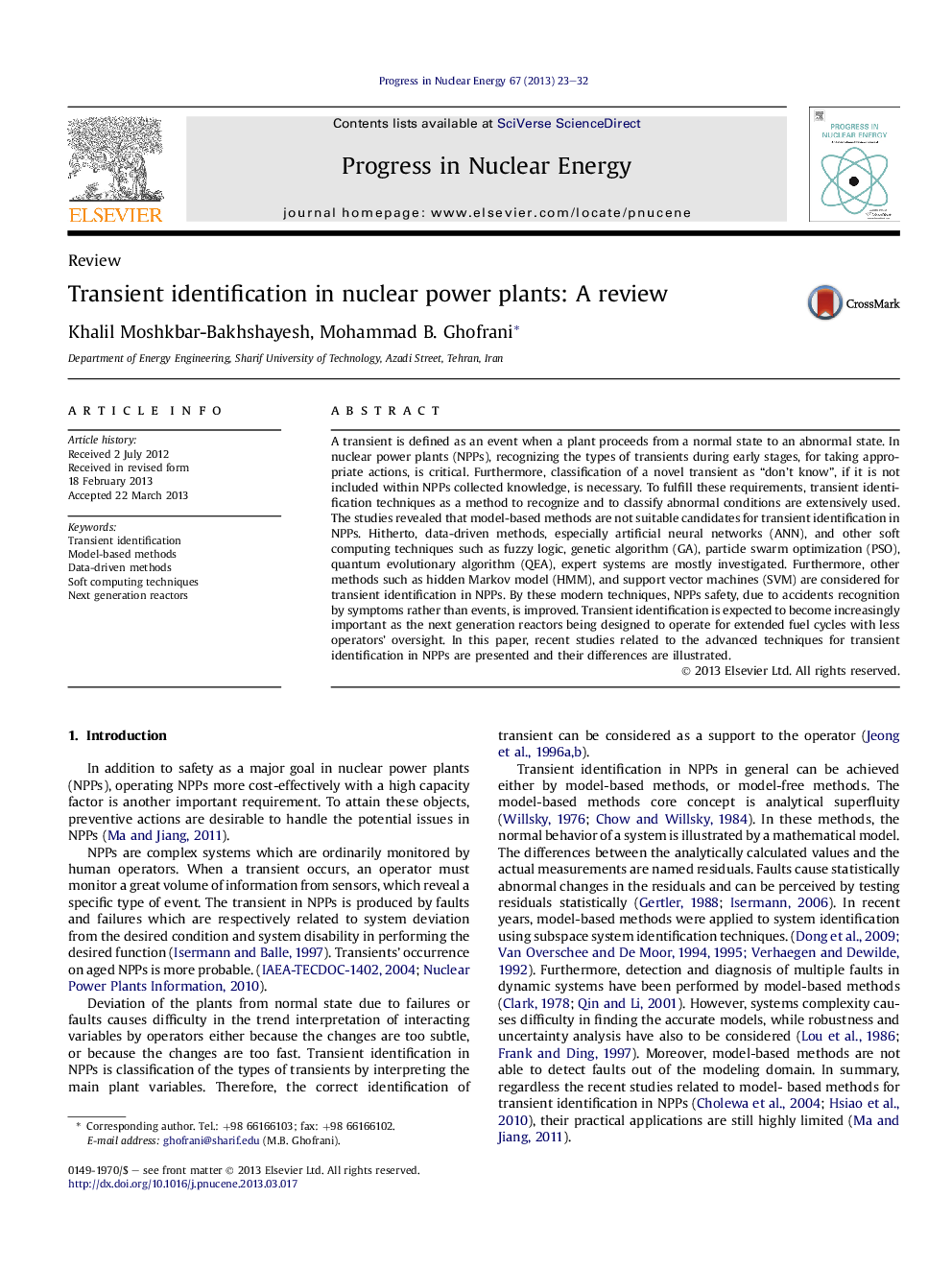| Article ID | Journal | Published Year | Pages | File Type |
|---|---|---|---|---|
| 1740826 | Progress in Nuclear Energy | 2013 | 10 Pages |
•Correct identification of transient can be an efficient support to NPPs operator.•Model-based methods for transient identification in NPPs are still limited.•Transient Identifiers are based on fuzzy systems, ANN, and heuristic techniques.•ANN is more appropriate than fuzzy systems and heuristic techniques.•Additional research required before applying automated identification systems.
A transient is defined as an event when a plant proceeds from a normal state to an abnormal state. In nuclear power plants (NPPs), recognizing the types of transients during early stages, for taking appropriate actions, is critical. Furthermore, classification of a novel transient as “don't know”, if it is not included within NPPs collected knowledge, is necessary. To fulfill these requirements, transient identification techniques as a method to recognize and to classify abnormal conditions are extensively used. The studies revealed that model-based methods are not suitable candidates for transient identification in NPPs. Hitherto, data-driven methods, especially artificial neural networks (ANN), and other soft computing techniques such as fuzzy logic, genetic algorithm (GA), particle swarm optimization (PSO), quantum evolutionary algorithm (QEA), expert systems are mostly investigated. Furthermore, other methods such as hidden Markov model (HMM), and support vector machines (SVM) are considered for transient identification in NPPs. By these modern techniques, NPPs safety, due to accidents recognition by symptoms rather than events, is improved. Transient identification is expected to become increasingly important as the next generation reactors being designed to operate for extended fuel cycles with less operators' oversight. In this paper, recent studies related to the advanced techniques for transient identification in NPPs are presented and their differences are illustrated.
